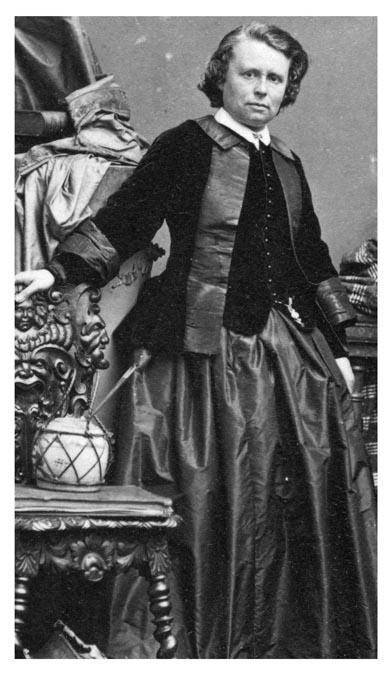
Marie-Rosalie Bonheur was born March 16, 1822 in Bordeaux, Gironde. Her mother was a piano teacher and died when Rosa was 11.. Her father was a landscape portrait painter who encouraged his daughter’s artistic talents. Though of Jewish origin, the Bonheur family followed a Christian-socialist sect that promoted the education of women alongside men.

Rosa was not destined for greatness. Her father moved the family to Paris when she was 7. He left his family to survive mostly on their own. Her mother struggled for support by teaching piano lessons and sewing. When she died, because of the family’s status as the poor, she was buried in a pauper’s grave. Bohneur vowed she would never marry and have children and it was a promise she kept.
From her earliest years, Rosa painted animals, which she believed had souls just like humans. When she was 19, she showed two small paintings at the prestigious Paris Salon. One was of two rabbits nibbling on a carrot, the other of goats and sheep.
Her best-known paintings are Ploughing in the Nivernais, first exhibited in 1848 and at the Musee d’Orsay in Paris and The Horse Fair which was exhibited at the Paris Salon of 1853 and now resides at the Metropolitan Museum of Art in New York City. Bonheur was widely considered to be the most famous female artist of the Nineteenth Century.
Rosa learned at the pastures around the perimeter of Paris, the open fields, and the still wild Bois de Boulogne studying horses, sheep, cows, goats, and rabbits. She studied animal anatomy and osteology in the abattoirs of Paris and dissected animals at the Ecole nationale veterinaire d’ Alfort. By 1849 she had international fame and recognition. She traveled to Scotland and met Queen Victoria en route who admired Bonheur’s work.
Her pieces completed in 1860 depicted a way of life in the Scottish highlands that had disappeared a century earlier and those had enormous appeal to Victorian sensibilities. Bonheur exhibited her work at the Palace of Fine Arts and The Woman’s Building at the 1893 World’s Columbian Exposition in Chicago. She was decorated with the French Legion of Honour by Empress Eugenie in 1865 and was promoted to Officer of the Order in 1894.
In her world where gender expression was policed, Rosa broke boundaries by deciding to wear pants, shirts and ties. She did so because she wanted to identify with the power and freedom reserved for men. Bonheur took pleasures in activities usually reserved for men such as hunting and smoking. She viewed her womanhood as something far superior to anything a man could offer or experience. Bonheur’s legacy paved the way for other women artists who didn’t favour the life society had laid out for them.
Along with other artists who were realist painters of the 19th Century, Bonheur fell from fashion and in 1978 a critic said that she was “entirely forgotten and rarely dragged out from oblivion”. However, that same year her Ploughing the Nivernais was part of a series sent to China by the French government for an exhibition entitled “The French Landscape and Peasant 1820-1905.” Since then her reputation has revived. A biography was published during her lifetime and appeared just after her Salon success with The Horse Fair in 1856.
Rosa Bonheur died May 25, 1899 art age 77 at Thomery, France. She was buried at the Pere Lachaise Cemetery, Paris. After her death, many of her paintings were sold at auction in Paris in 1900. One work, Monarchs of the Forest, was sold at auction in 2008 for more than $200,000.

